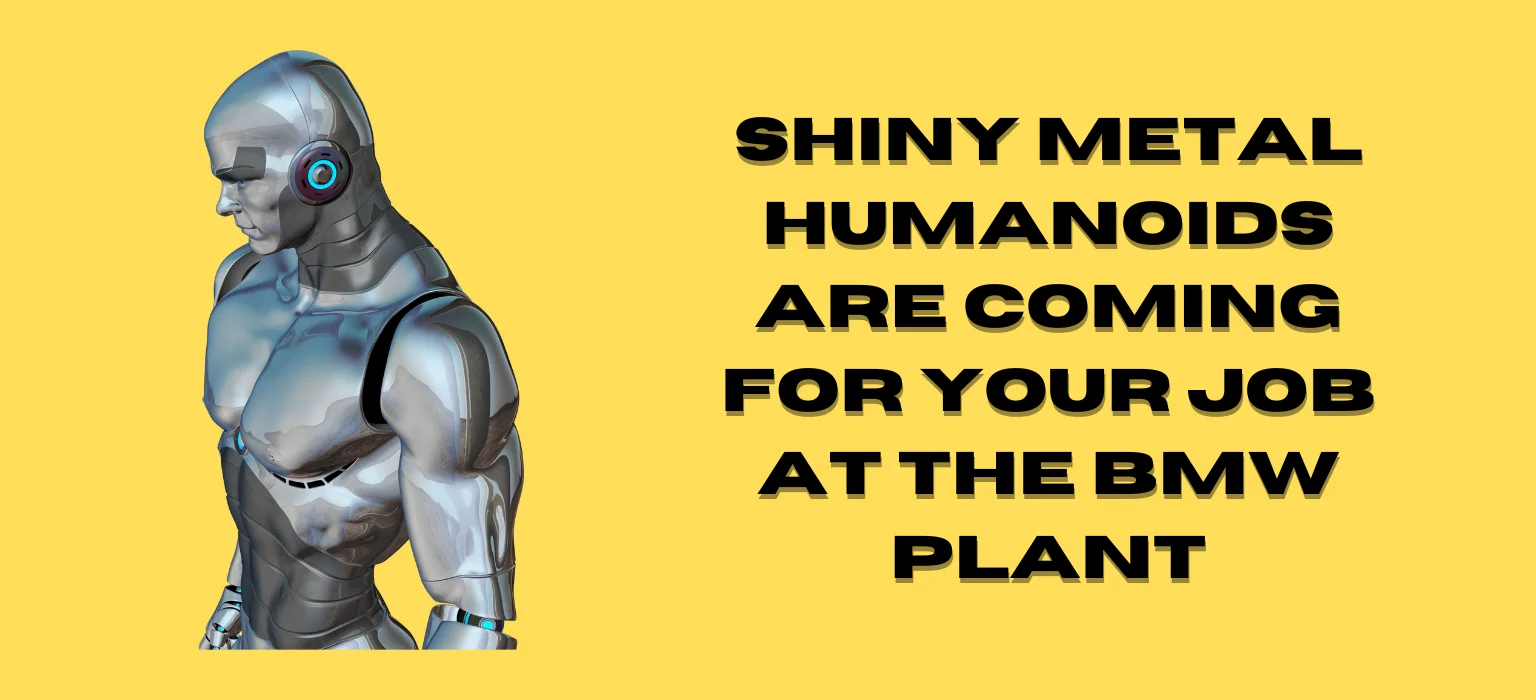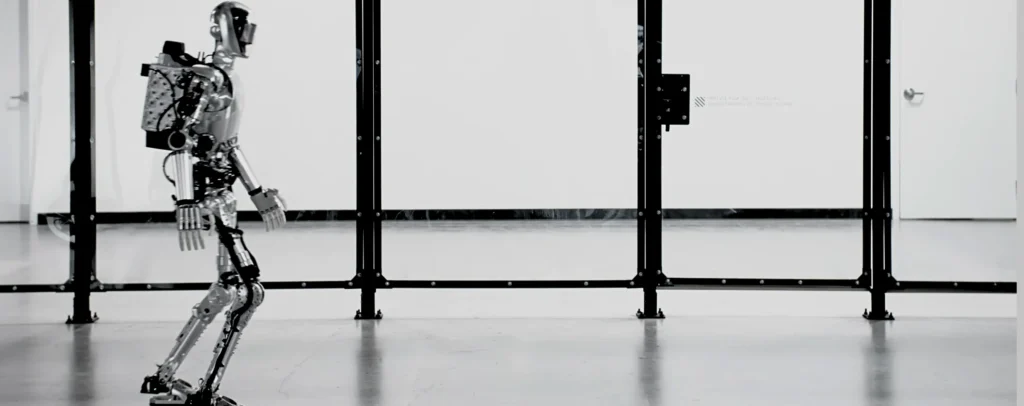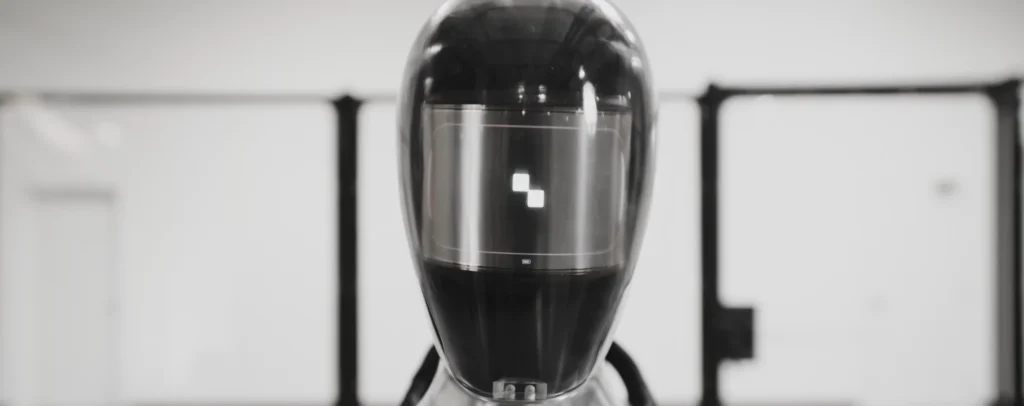
BMW is bringing humanoid robots to its South Carolina factory. What will these droids actually do and are they a threat to human workers’ jobs? Read this deep dive.
BMW Inks Deal to Bring Humanoid Robots to US Factory
BMW has signed an agreement to deploy a fleet of 5-foot-6, 130-pound humanoid robots at its automobile manufacturing facility in Spartanburg, South Carolina. Built by robotics startup Figure, these droids have two arms, two legs, and a torso like a human – allowing them to traverse the factory floor and potentially perform physical tasks using their limbs.
What Exactly Can This Humanoid Robot Do?

The Figure 01 bot runs on a battery that needs recharging every 5 hours. With its two dexterous arms equipped with sensors, it can lift objects weighing up to 45 pounds. Its two legs empower it to walk at speeds up to 2.7 mph. This degree of mobility around the factory gives it an advantage over traditional stationary industrial robots.
The company claims that the droid’s artificial intelligence allows it to carry out “difficult, unsafe, or tedious tasks” – but has not publicly specified what its exact roles will be on BMW’s assembly lines. One speculated use case is assisting workers by gripping heavy objects that require two hands.
Will These Humanoid Robots Take Auto Workers’ Jobs?
On paper, these agile robots could significantly reduce BMW’s reliance on human workers for certain manual jobs in the plant. The launch comes after factory staffers negotiated a new deal for 25% higher wages over 4 years. With rising labor costs eating into their bottom line, BMW may view these tireless robot workers as a way to improve productivity and cut expenses.
However, BMW maintains that the technology will “enable the automation of dull, dirty and dangerous work” while allowing human employees to focus on more high-value tasks. The carmaker says its priority is using innovation to boost efficiency – not to replace its workforce.
BMW Falls Behind Tesla in Bot Goldrush

BMW is racing against competitors, especially Tesla, to deploy humanoid robots on the shop floor. Back in 2019, Tesla CEO Elon Musk showcased a prototype of the Tesla Bot, branded Optimus. He claimed that one day it could even surpass the value of Tesla’s EV models.
While BMW’s deal with Figure is a step forward, both companies trail Tesla which is aggressively developing in-house humanoid robots. Tesla’s Optimus bot can reportedly perform basic functions like squatting and gently picking up eggs. BMW has not demonstrated such concrete use cases yet for its own humanoids.
Why Are Carmakers So Gung-Ho About Humanoid Robots?
Automakers seem convinced human mimic bots represent the future of advanced manufacturing automation. The theory is that by approximating a human’s flexibility, mobility and dexterity, they can handle far more diverse tasks around volatile factory environments. Single-purpose robots lack these generalist capabilities required for the next wave of intelligent process automation.
Beyond production efficiencies and cost savings, some experts believe mastering cutting-edge humanoids now will pave the way for consumer robotics markets down the line. For tech-firms like Tesla, building real-world know-how today could position them to sell useful bots directly to retail customers tomorrow.
When Will BMW’s Robo-Workers Arrive at the South Carolina Plant?
BMW and Figure are presently identifying specific applications for the robots on the shop floor. Figure anticipates its first batch of droids will report for duty at the Spartanburg facility sometime in 2024 if all goes to plan.
For now, the carmaker is keeping its cards close to its chest, only noting that it sees humanoids as a “tool in our toolbox” for next-gen manufacturing. It remains to be seen if these prototypes live up to futuristic hype as the solution for greasing wheels in BMW’s US production ecosystem.
Final Words
The march of automation and artificial intelligence in manufacturing sectors appears inevitable. However, forecasts that armies of tireless robot workers will displace human jobs en masse remain premature. The successful integration of thinking, moving robots like Figure’s droids alongside people on shop floors will hinge on them proving complementary, not competitive, in the real world.
BMW’s experiment with these humanoid helpers in South Carolina in 2024 will provide a litmus test. If they can smoothly enhance production without undermining the unique value of human oversight, judgment and creativity, it may signal a new era. Rather than each humanoid stealing work from a person, the ideal scenario sees one multiplying the throughput of a team through seamless collaboration.
Still, not all tasks in auto manufacturing may prove suited to automation via these multi-purpose androids – no matter how dexterous and intelligent they become. Replicating humans’ contextual judgment, improvisation skills, emotional EQ, ethical wiring and relentless drive represents an immense challenge. Workers hearing about BMW’s deal with Figure have valid concerns about long-term job security.
How BMW positions these first waves of mechanical human imitators – as assistants or full-on replacements – will set the tone. Deployed strategically, Figure’s robots in Spartanburg could get the ball rolling on a promising new symbiosis between man and machine in carmaking. Handled clumsily, however, it risks alienating the irreplaceable human talent that will continue powering BMW’s production for decades to come.
Read More :-
- Lost in Linux? Find Your Files with These Command Line Search Tricks!
- AI-Powered Deepfake Robocall Uses Biden’s Voice to Discourage Voting in NH Primary
- VF Corporation Faces Enormous Data Breach Impacting Over 35 Million Customers
- TPM in 2024: Why Your PC Absolutely Needs It for Enhanced Security
- Samsung’s Futuristic Galaxy Ring Could Replace Your Smartwatch
- Microsoft Coming with Copilot Pro The Next-Gen AI 2024
